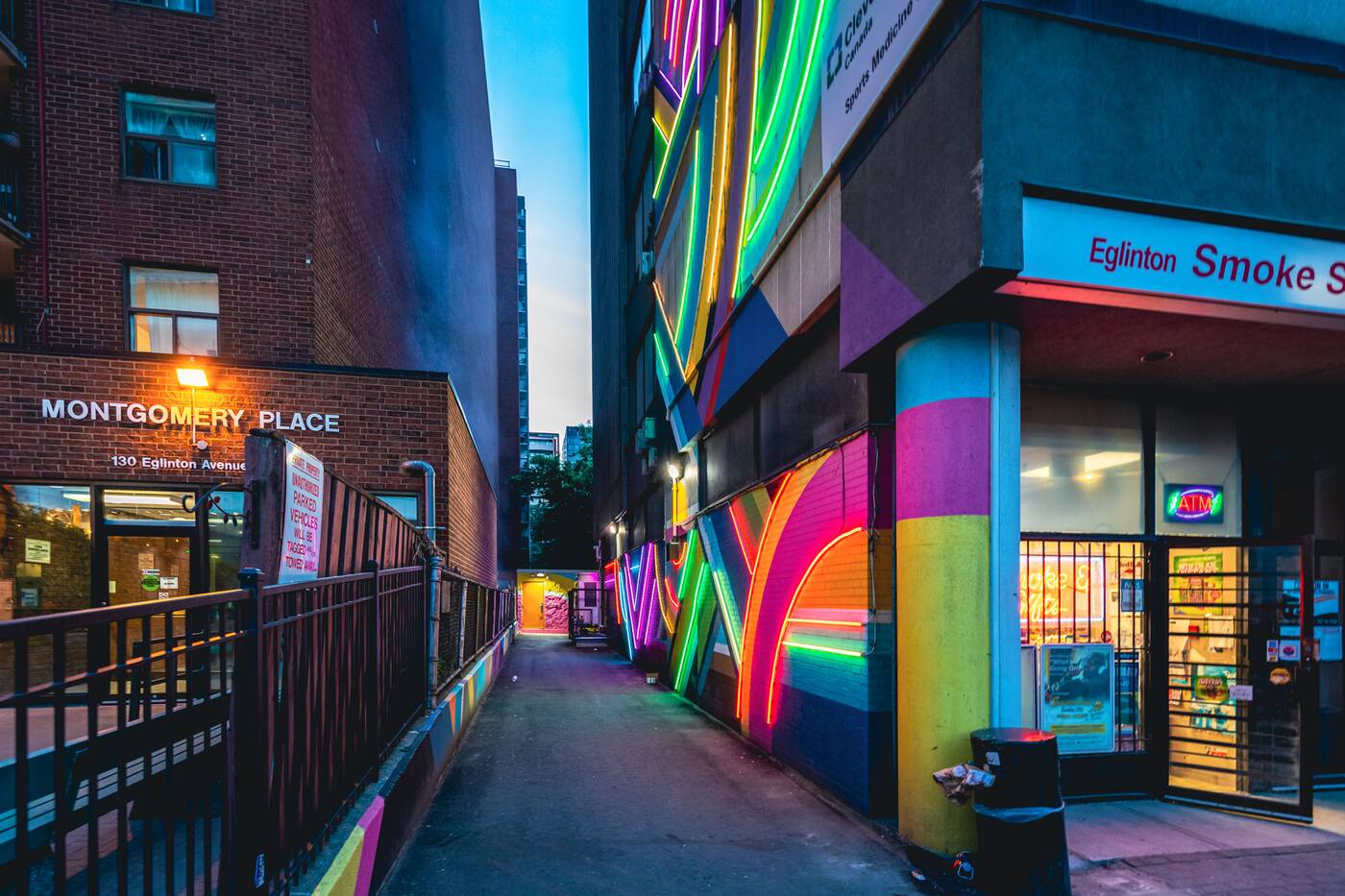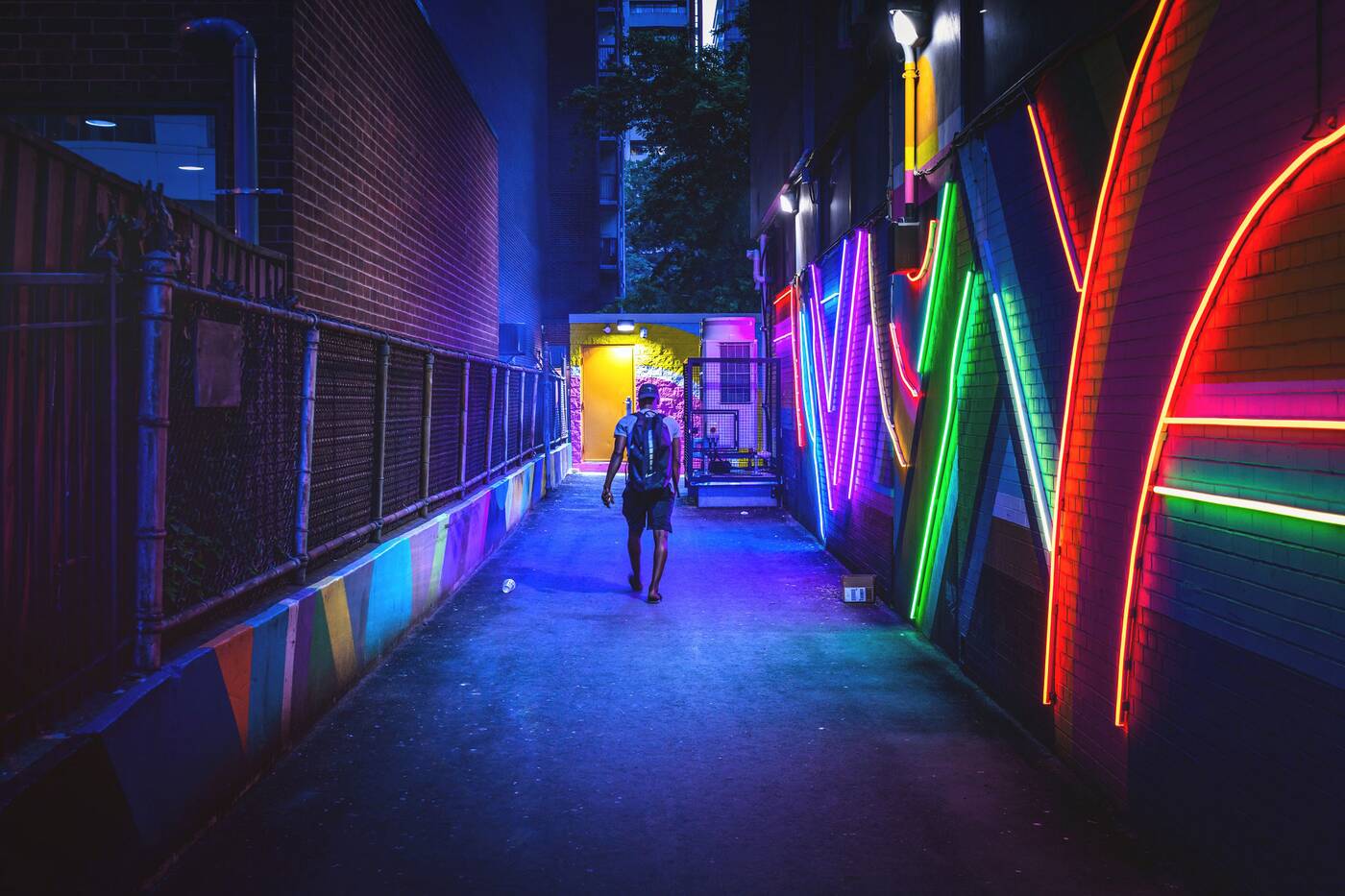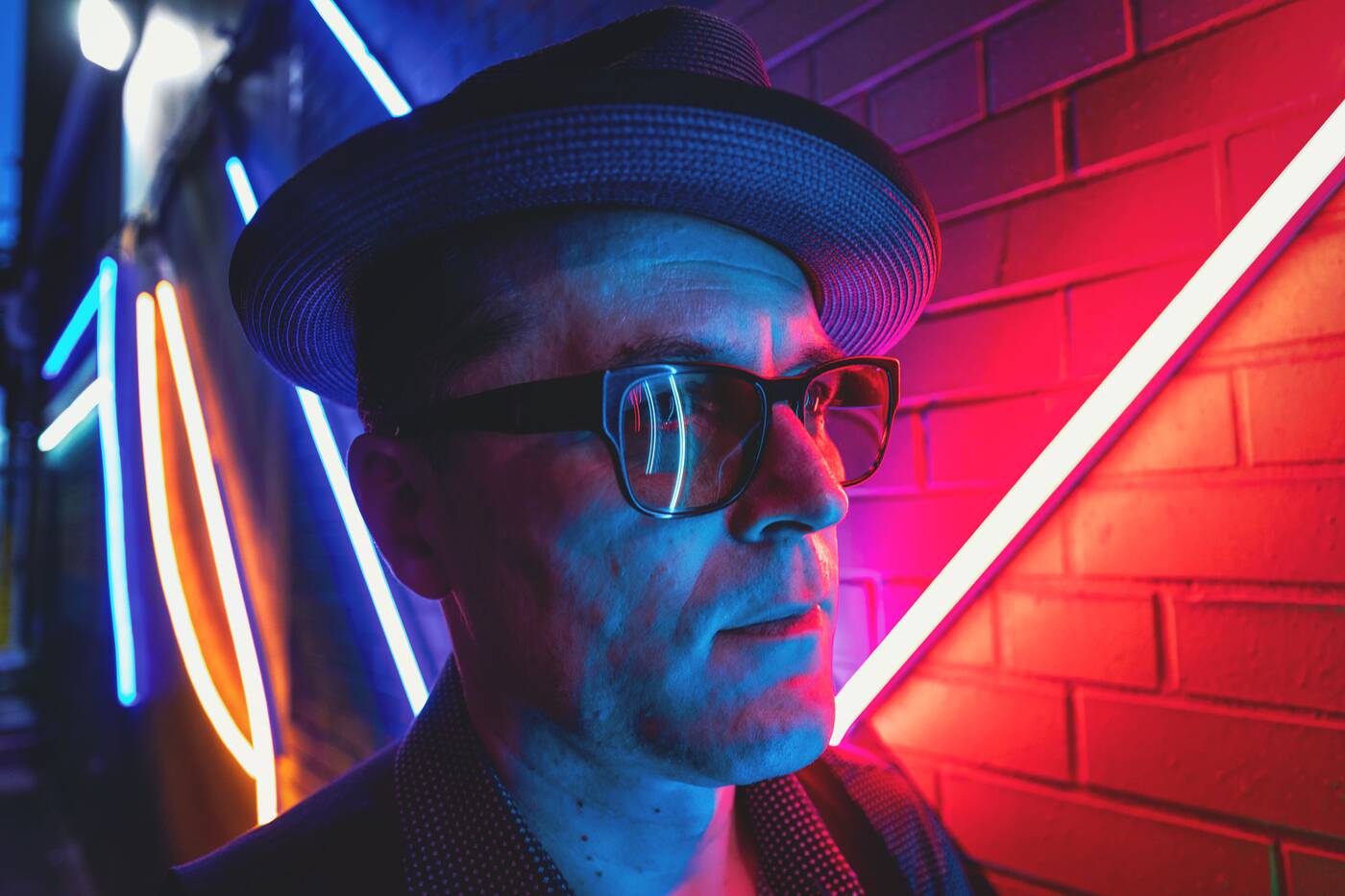
This colourful neon-lit alley is Toronto's favourite hidden futuristic selfie spot
Like a setting ripped straight out of a dystopian cyberpunk science-fiction film, a Toronto alley's illuminated mural has become a glowing beacon for selfie-takers and portrait photographers since first appearing along Eglinton Avenue East in 2019.
The massive art installation shines bright at 150 Eglinton East, a ten-storey office building a few blocks east of Yonge Street, and home to the restaurant La Latina.
It's pretty hard to miss, the glowing installation rising six storeys along the building's west facade and extending to the north through a pedestrian alley.

Curated by art consultant Marnie Mandel and commissioned by building owners Madison Group, the enormous light installation is a collaboration between mural artist David Guinn and lighting designer Drew Billiau.

Inspired by the geometric abstraction form of abstract art, specifically the work of the late Ukrainian-born French artist Sonia Delaunay, the installation throws in a distinctly 1980s spin with its colour palette and shapes evoking the style of the Memphis Group.
While the installation may appear from a distance as authentic neon lighting, it was actually created using LED Neon Flex Vivid S 270 RGB fixtures, giving off a similarly colourful light without relying on the old style of gas-filled tubes.

In addition to energy efficiency, LED lighting allows the installation to cycle colours versus the fixed hues of neon.
In its short existence, the installation has transformed the alley from a utilitarian parking lot connection into a hotspot for photographers and selfie-seekers.

On any given evening you're likely to find a few people congregating in the alley with smartphones or cameras in hand, the glow and reflections of the vivid lighting adding a surreal, cyberpunk-style quality to photos.

But like everything remarkable in this city, it may not last for long.
A redevelopment scheme to bring a two-tower office and condo complex to the site has been percolating for years. It would spell the end of the existing office tower and the facade the installation occupies.
Jack Landau
Latest Videos
Latest Videos
Join the conversation Load comments







